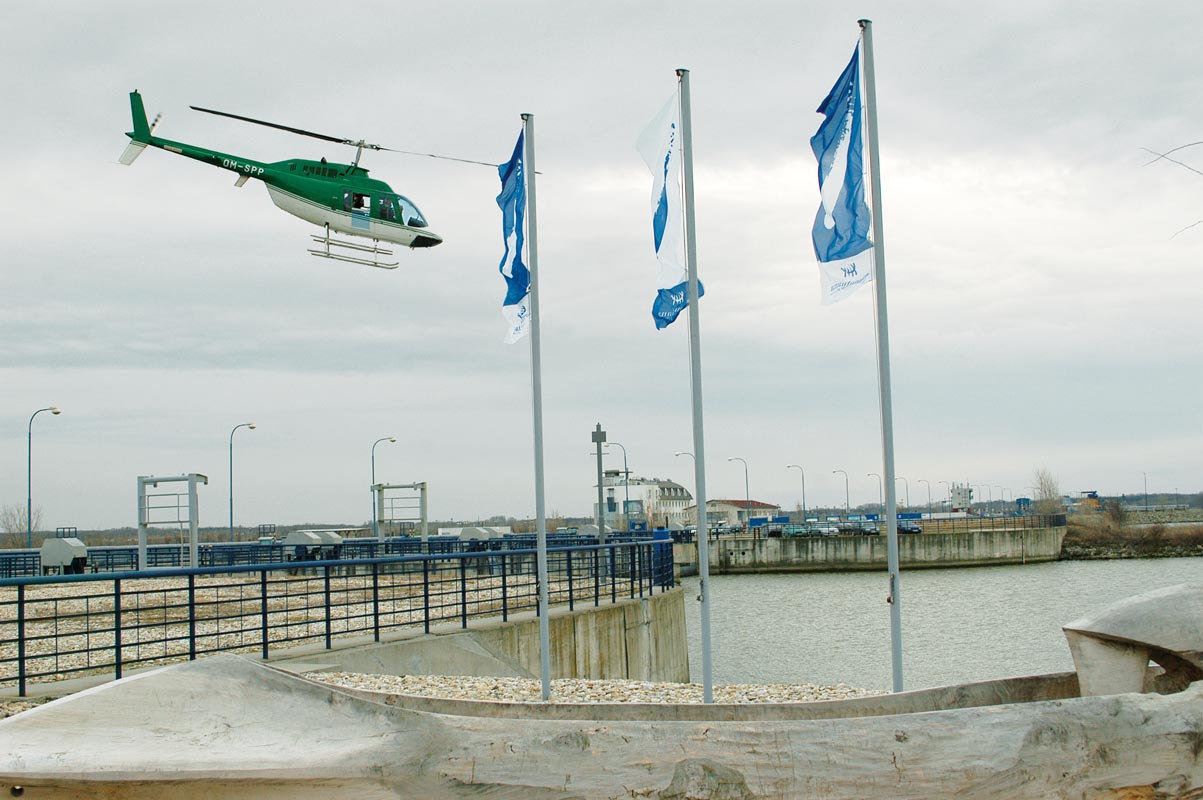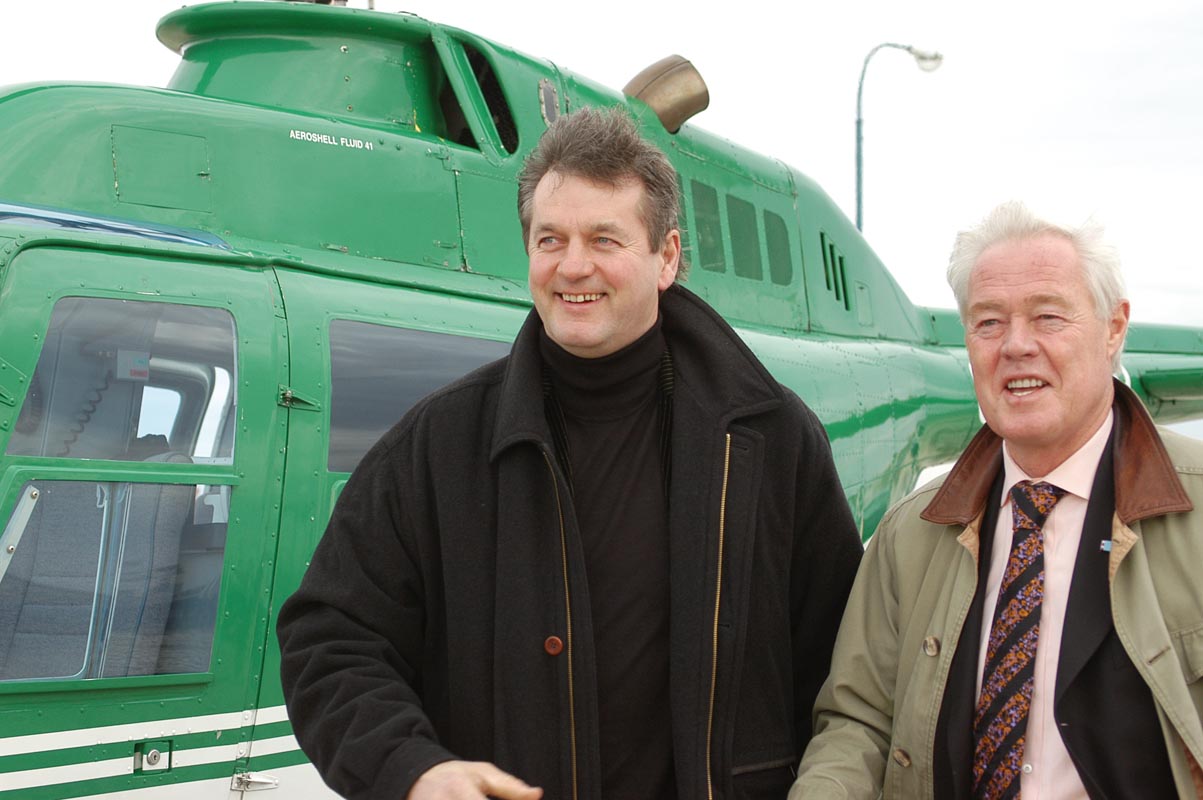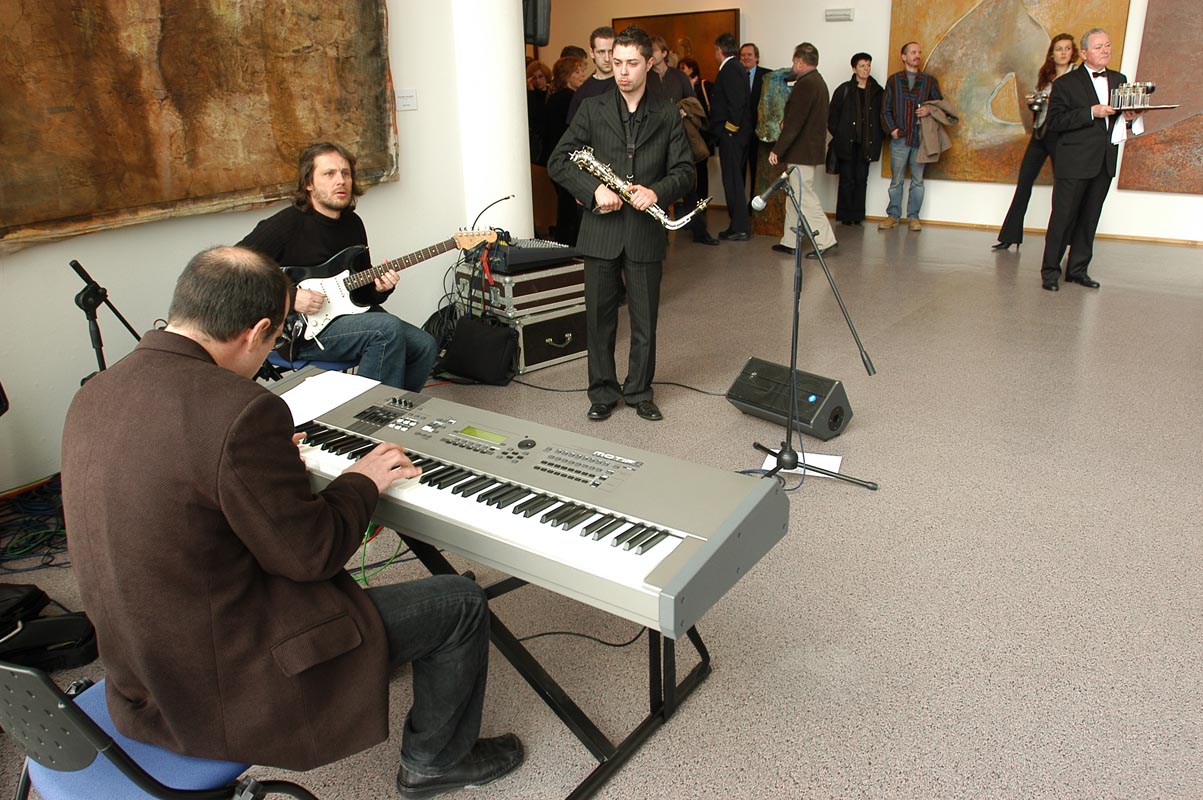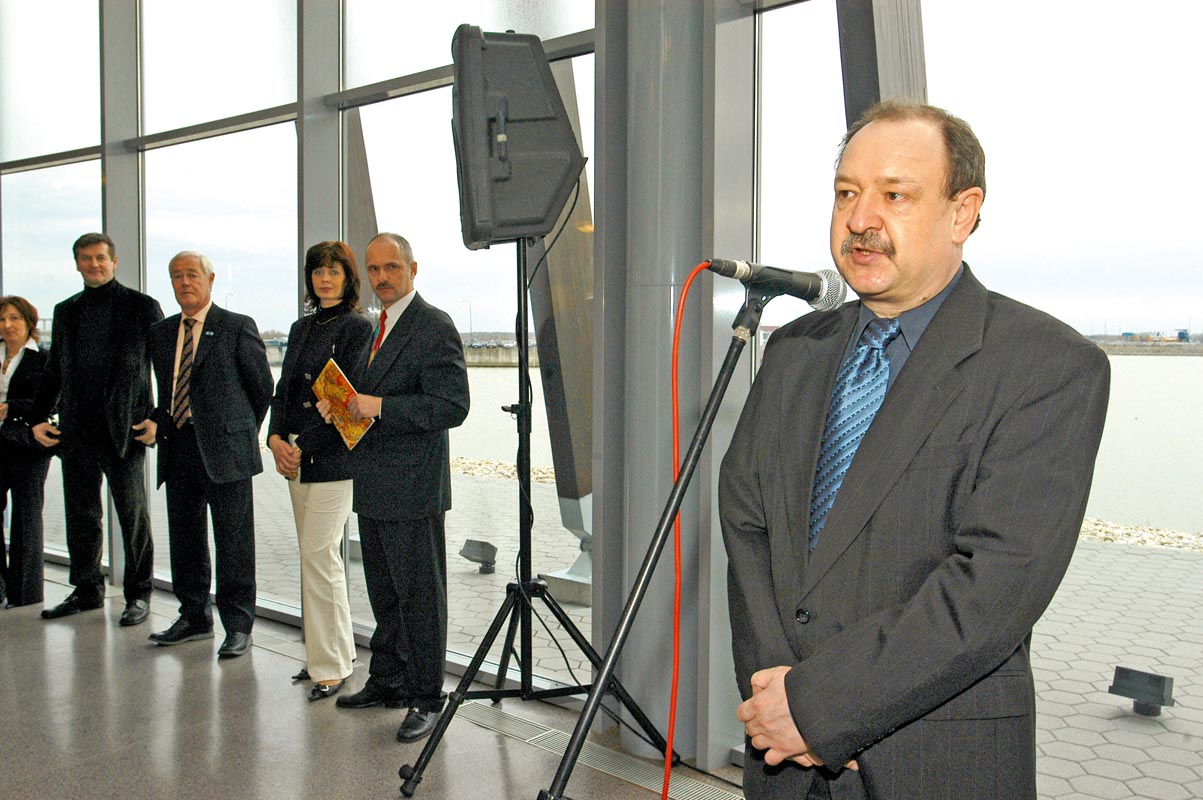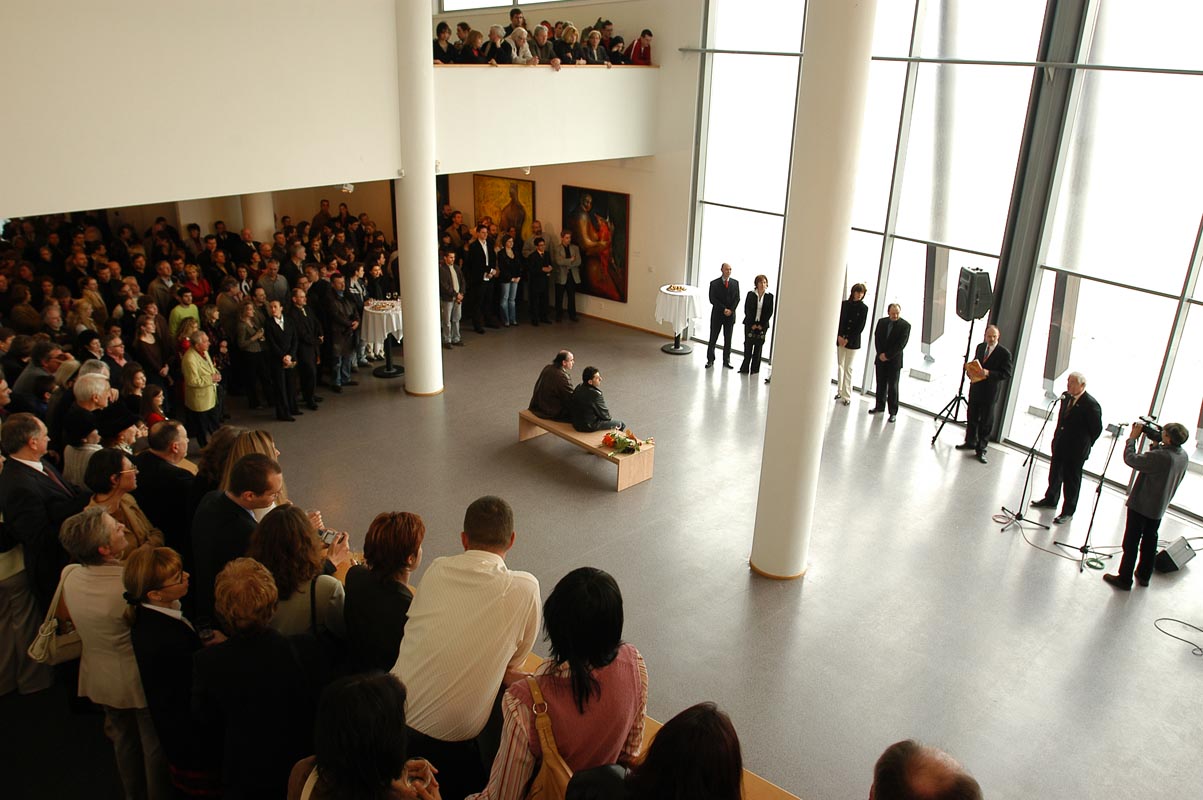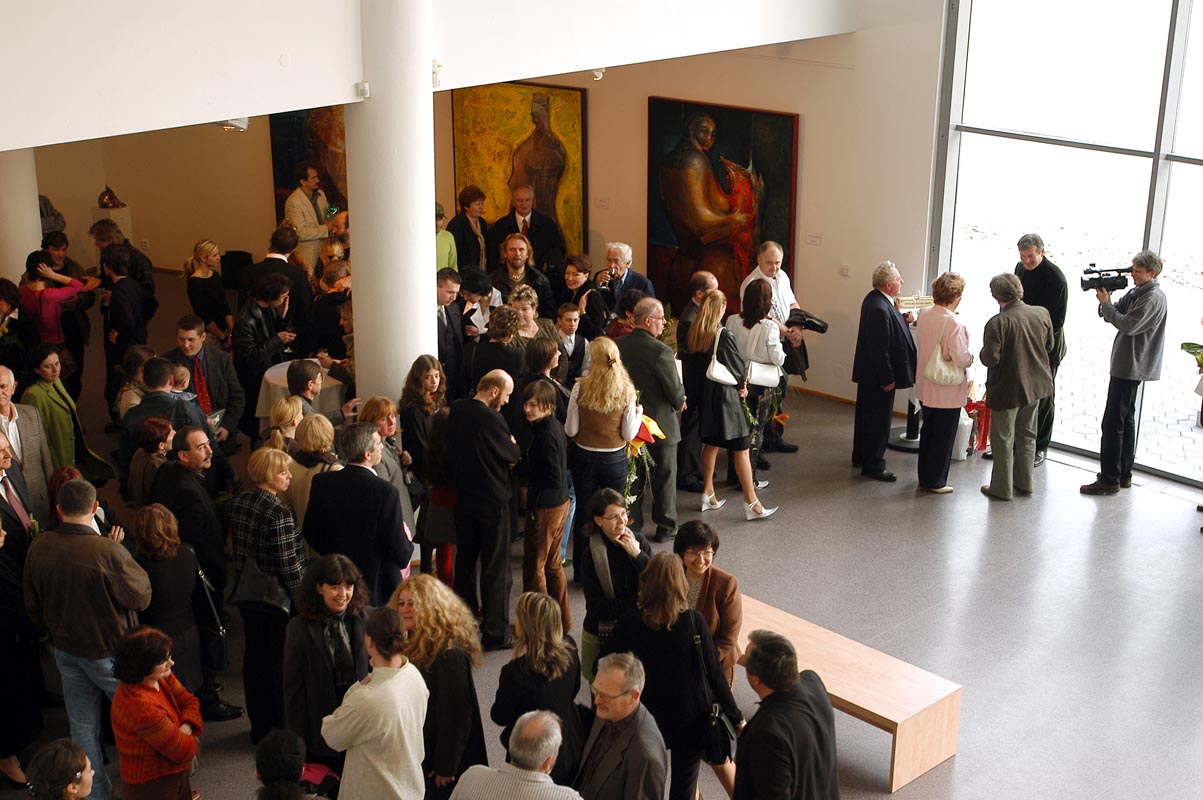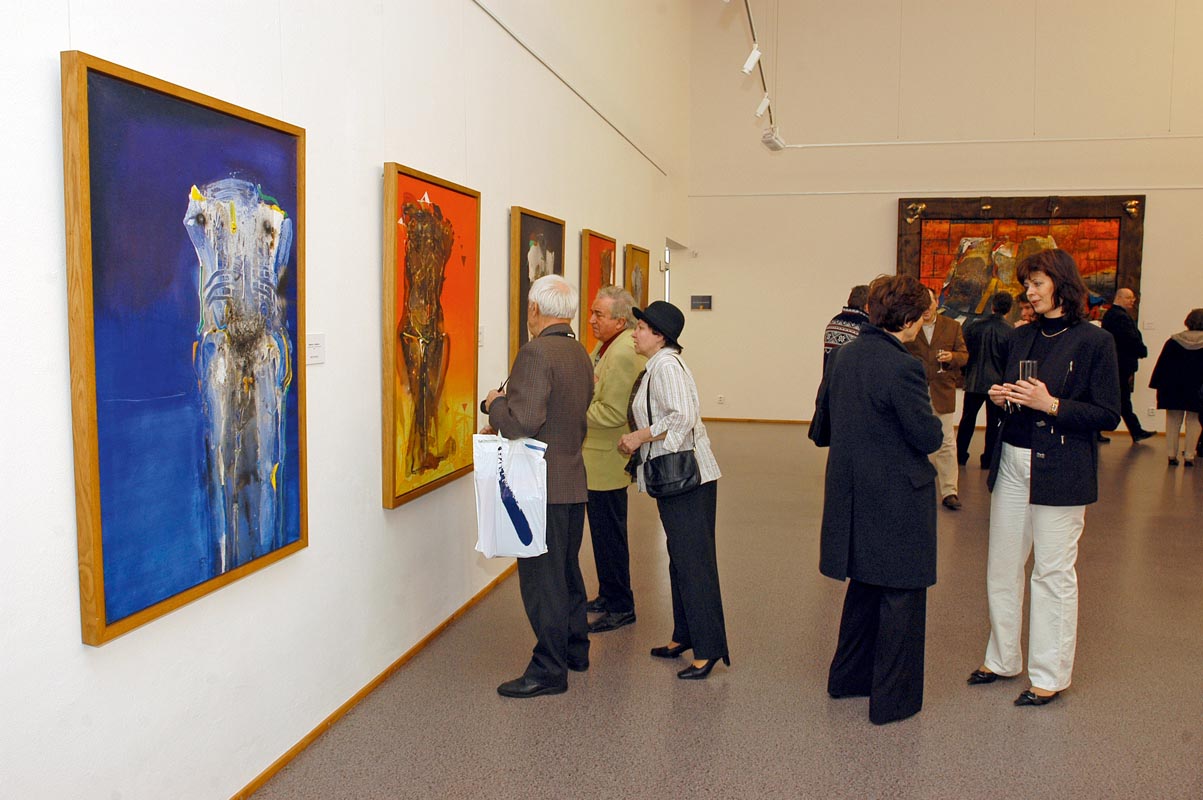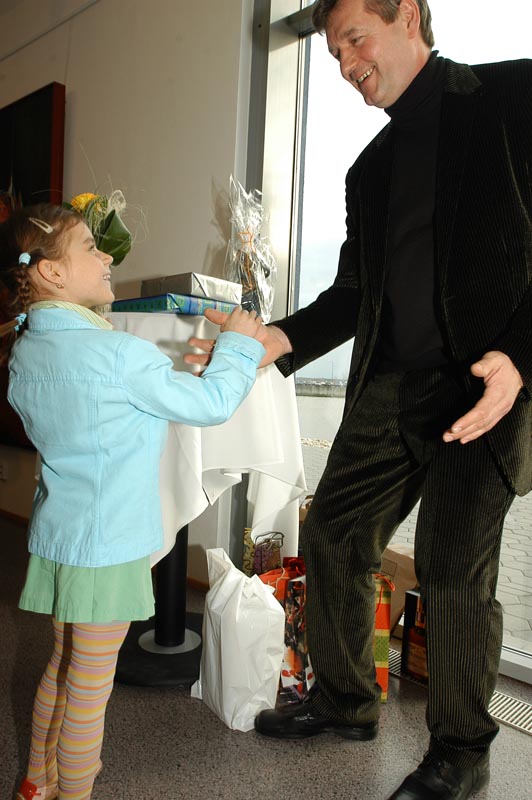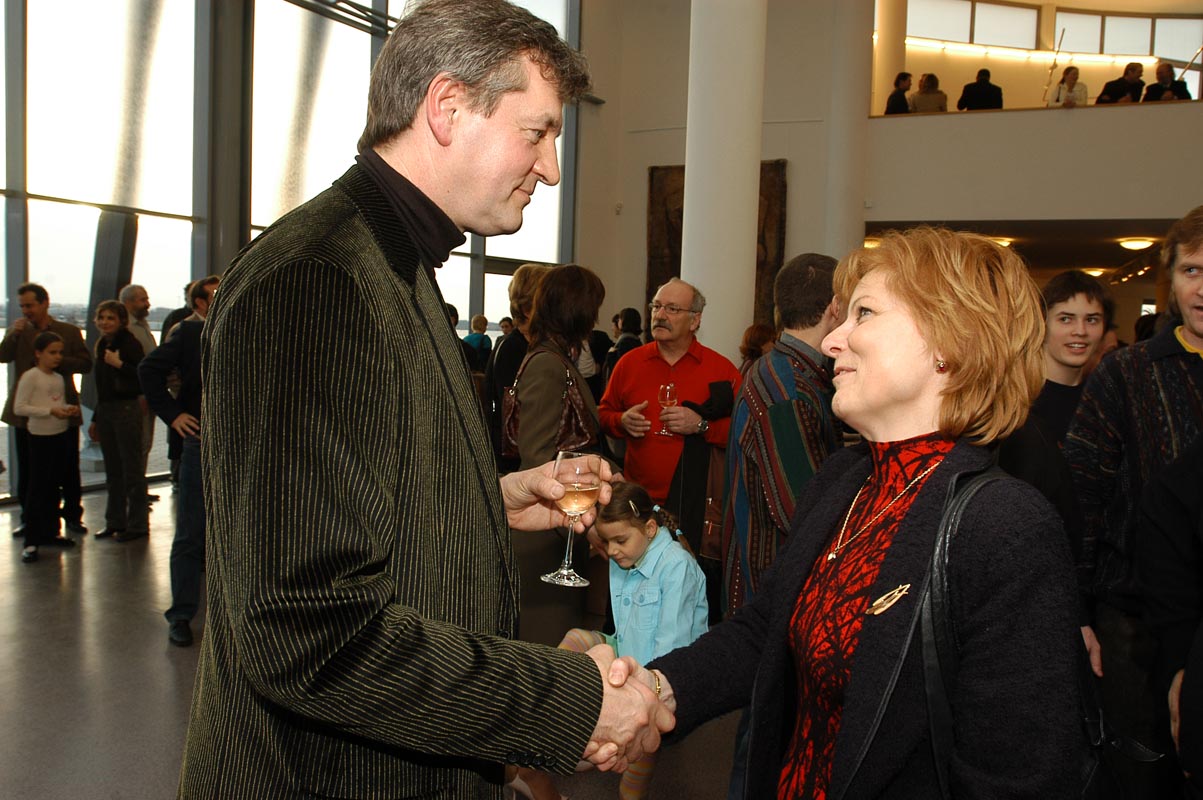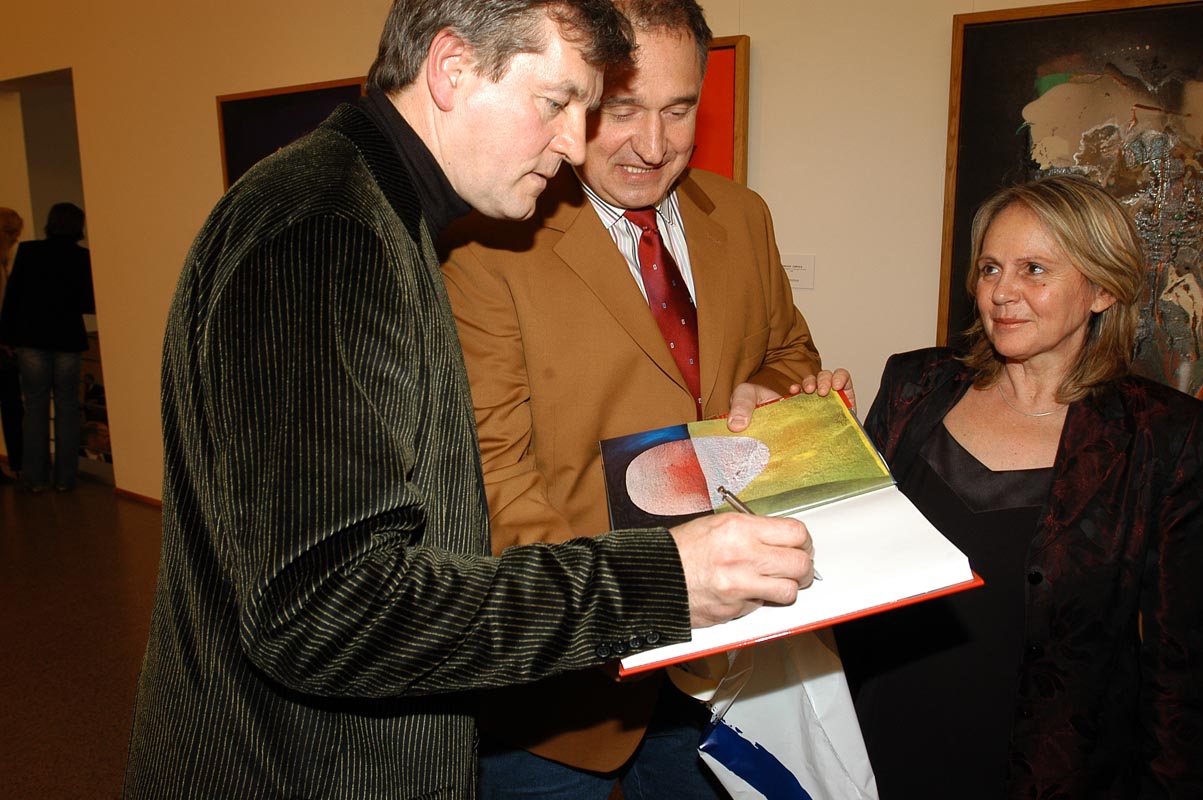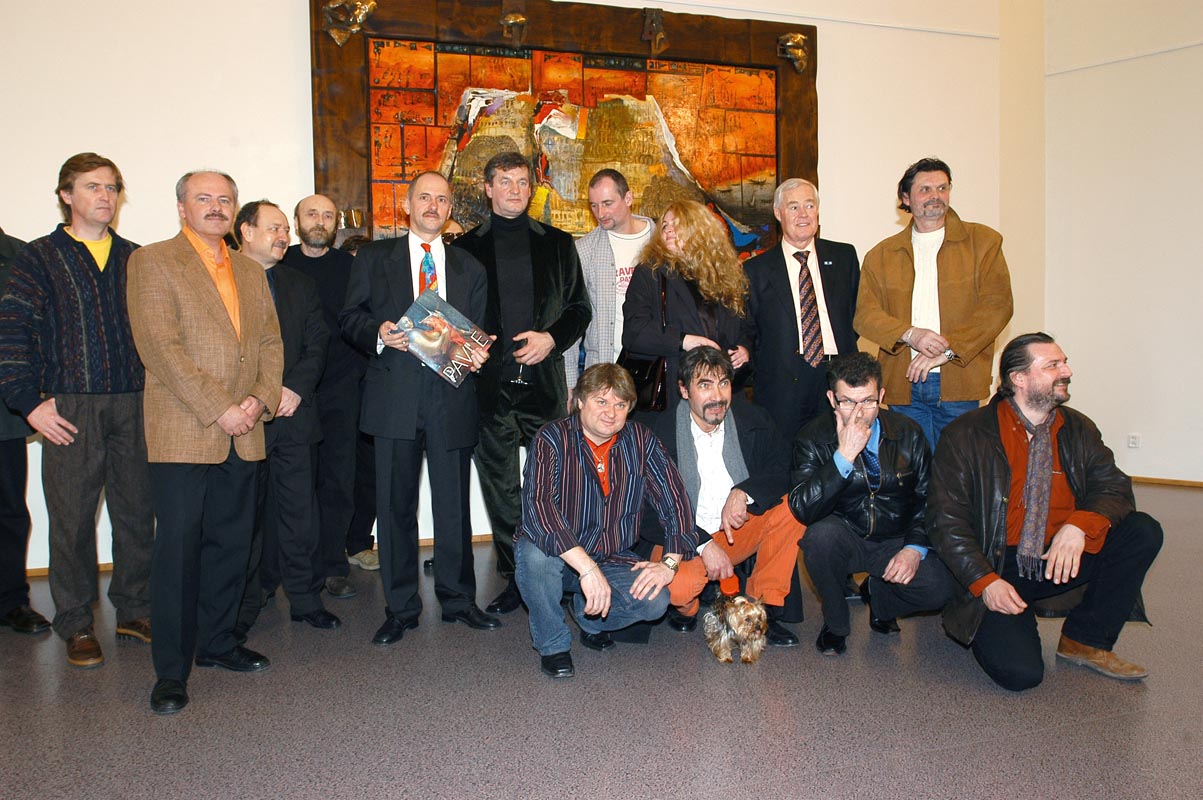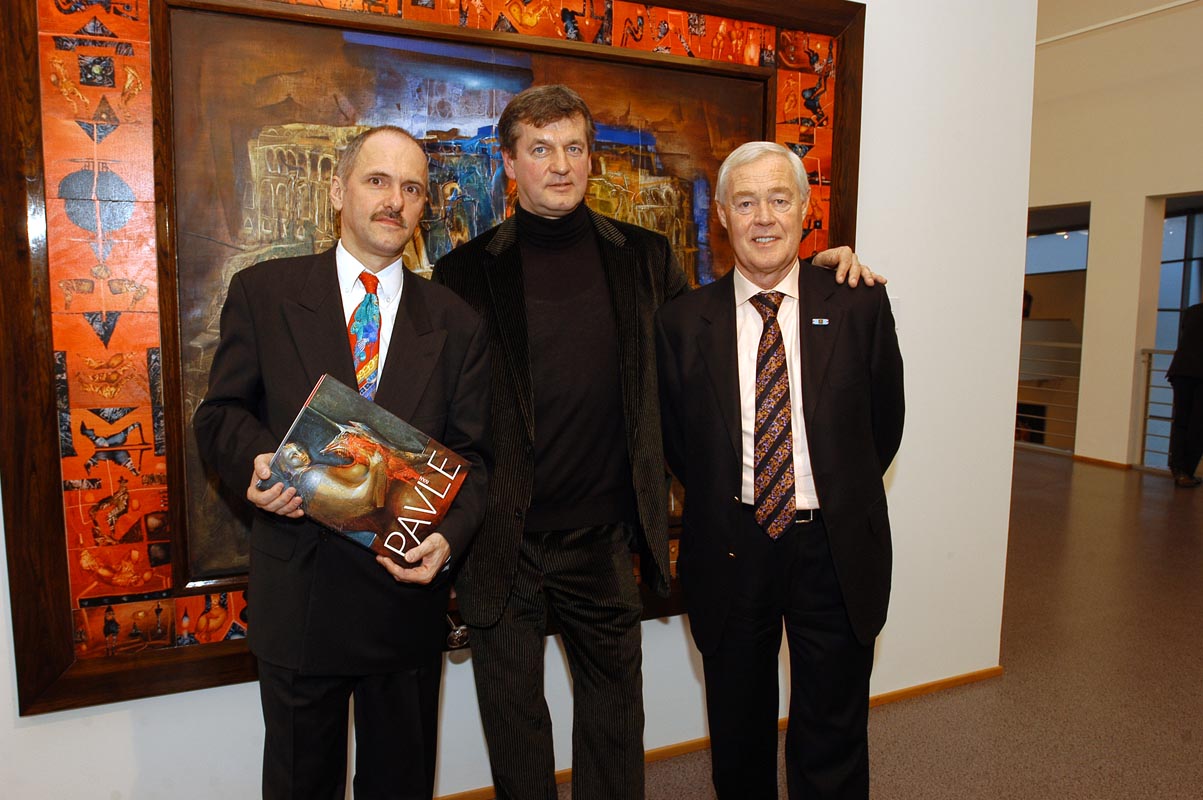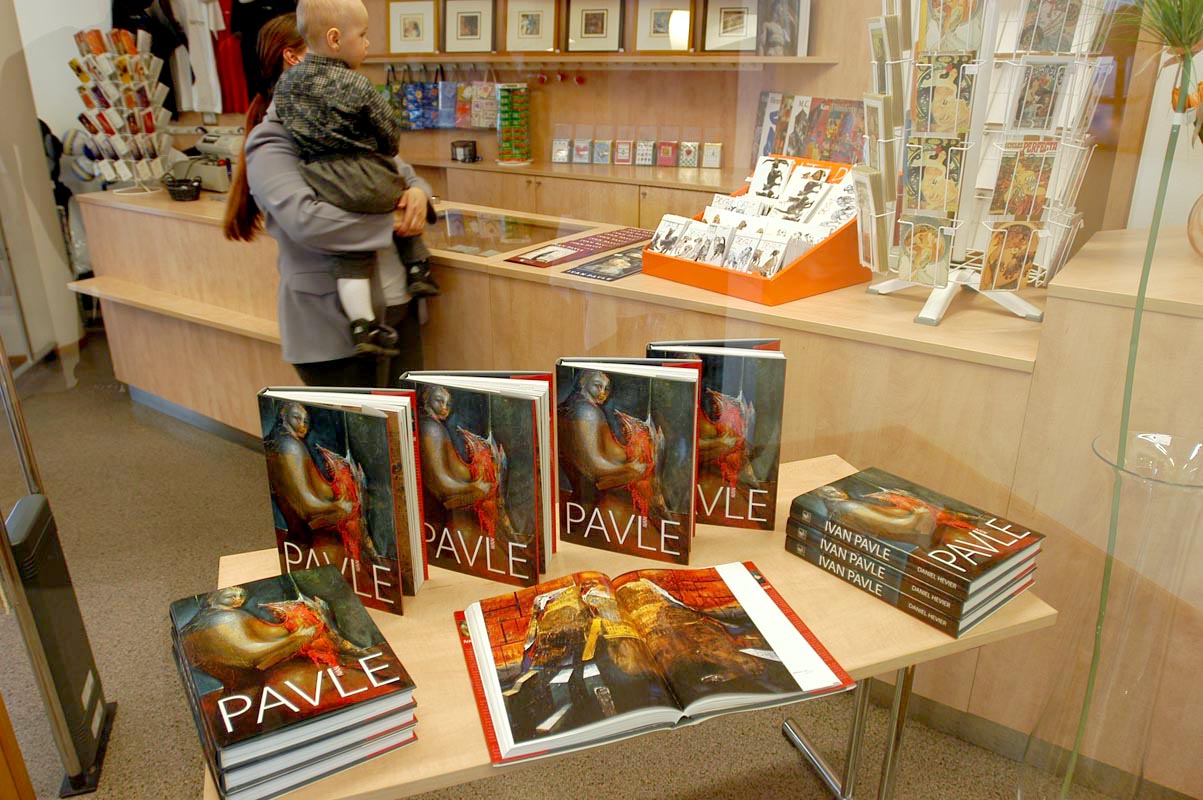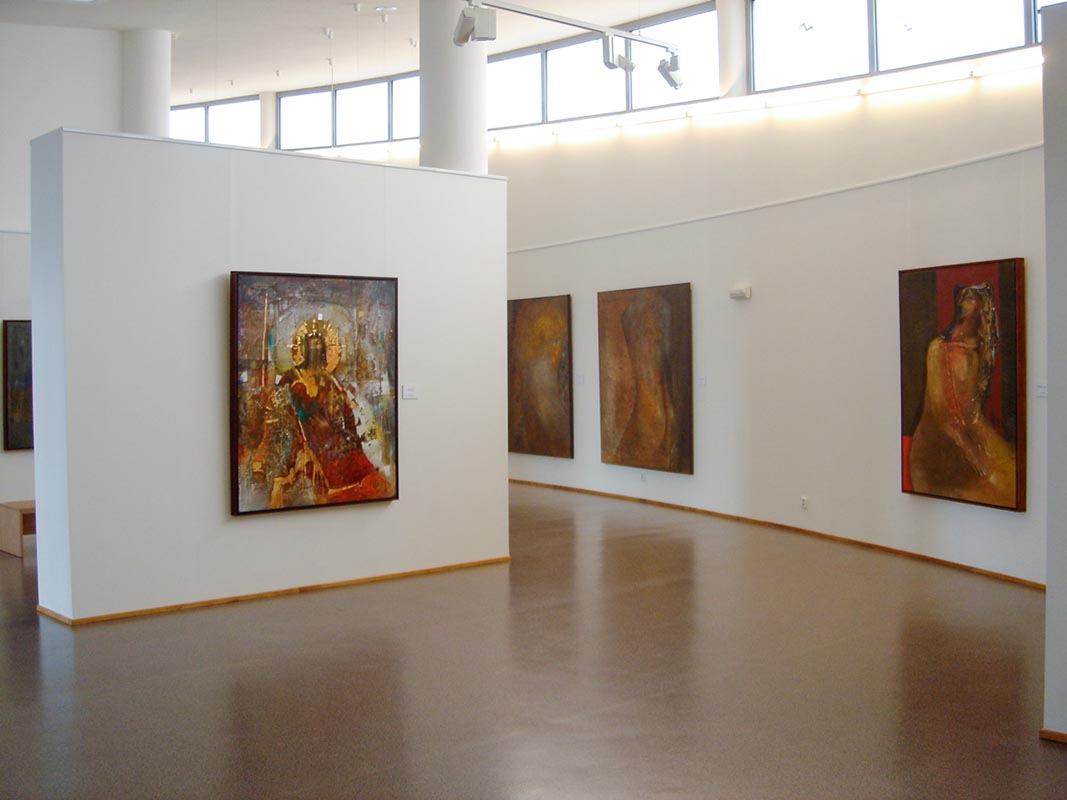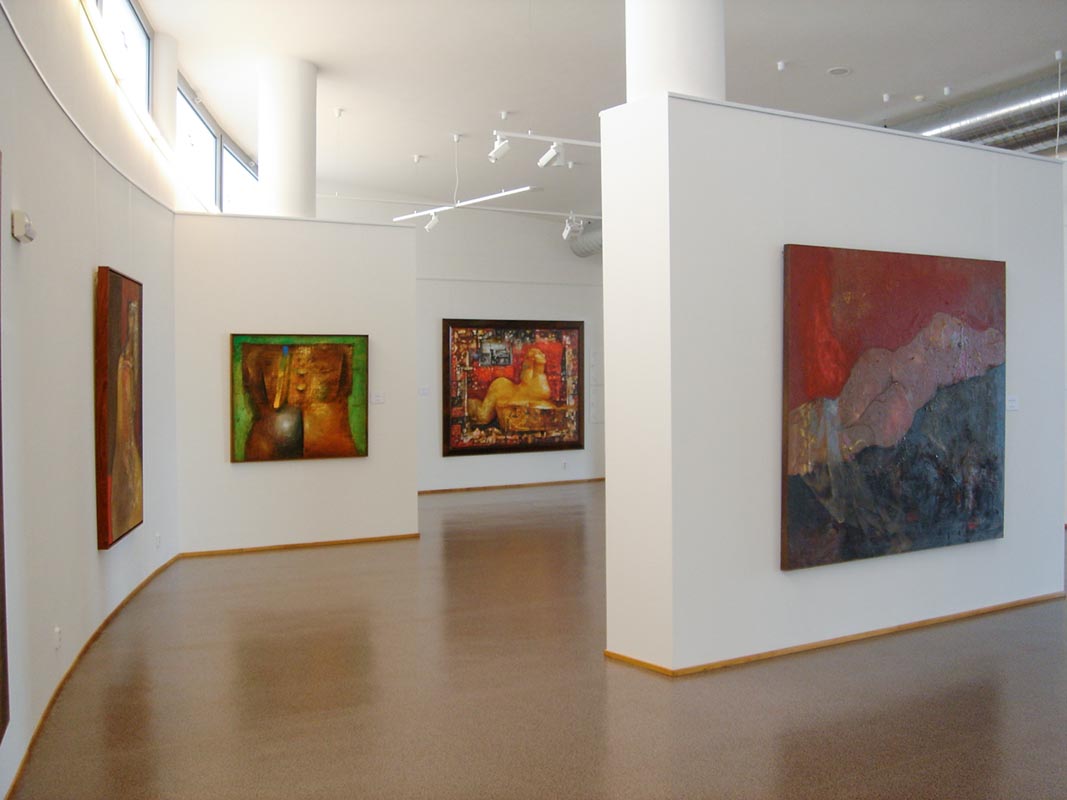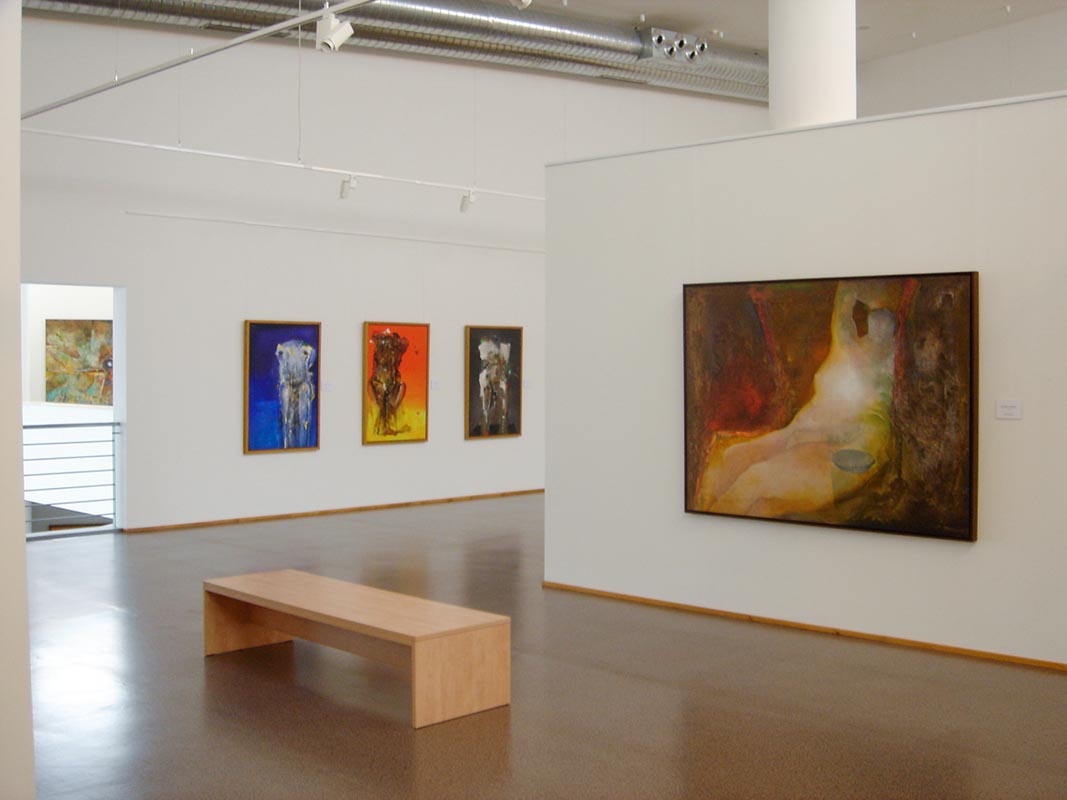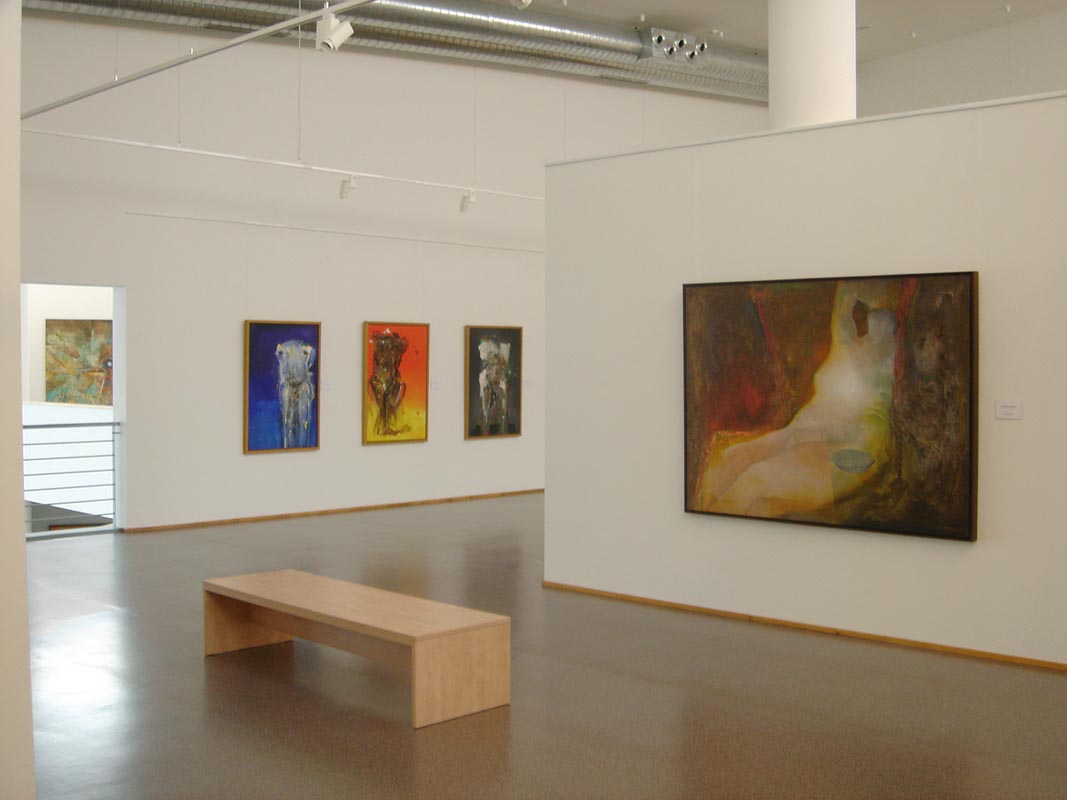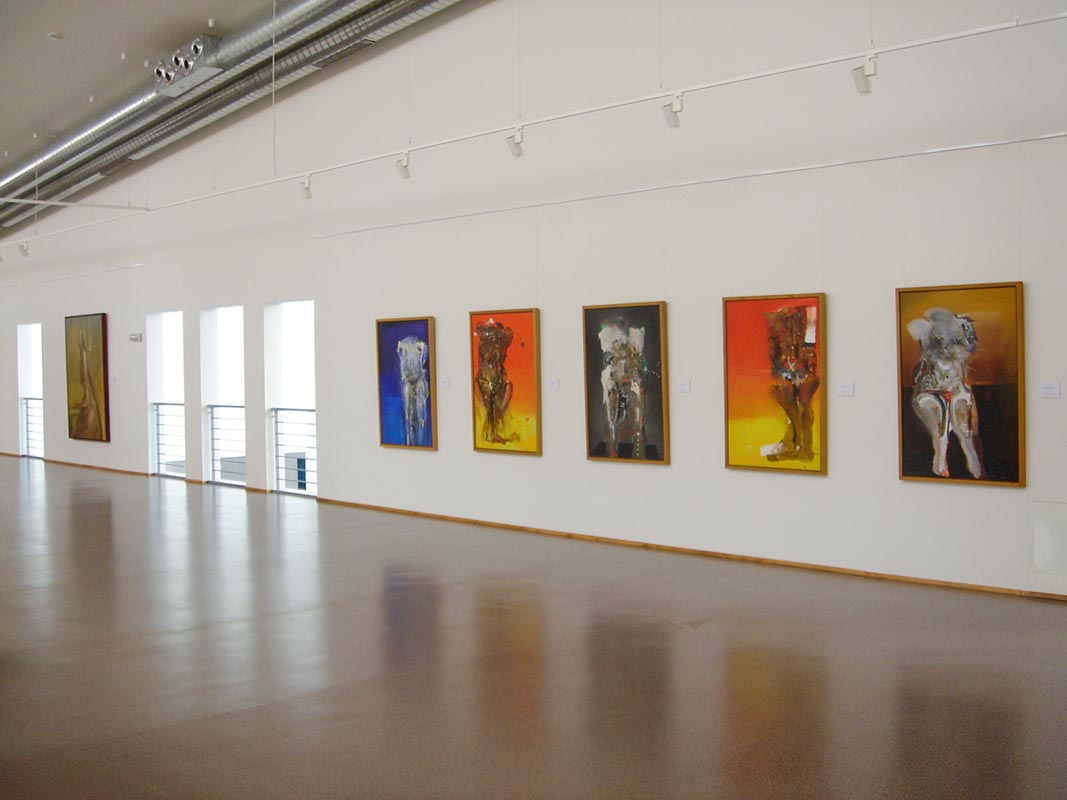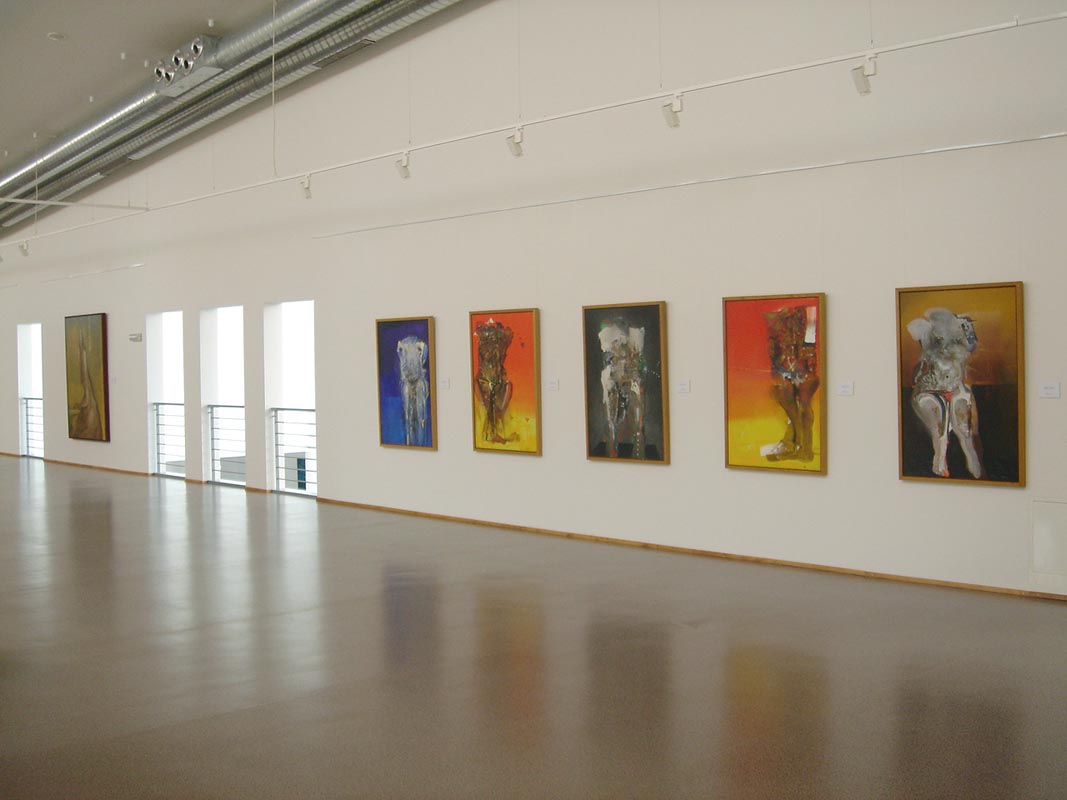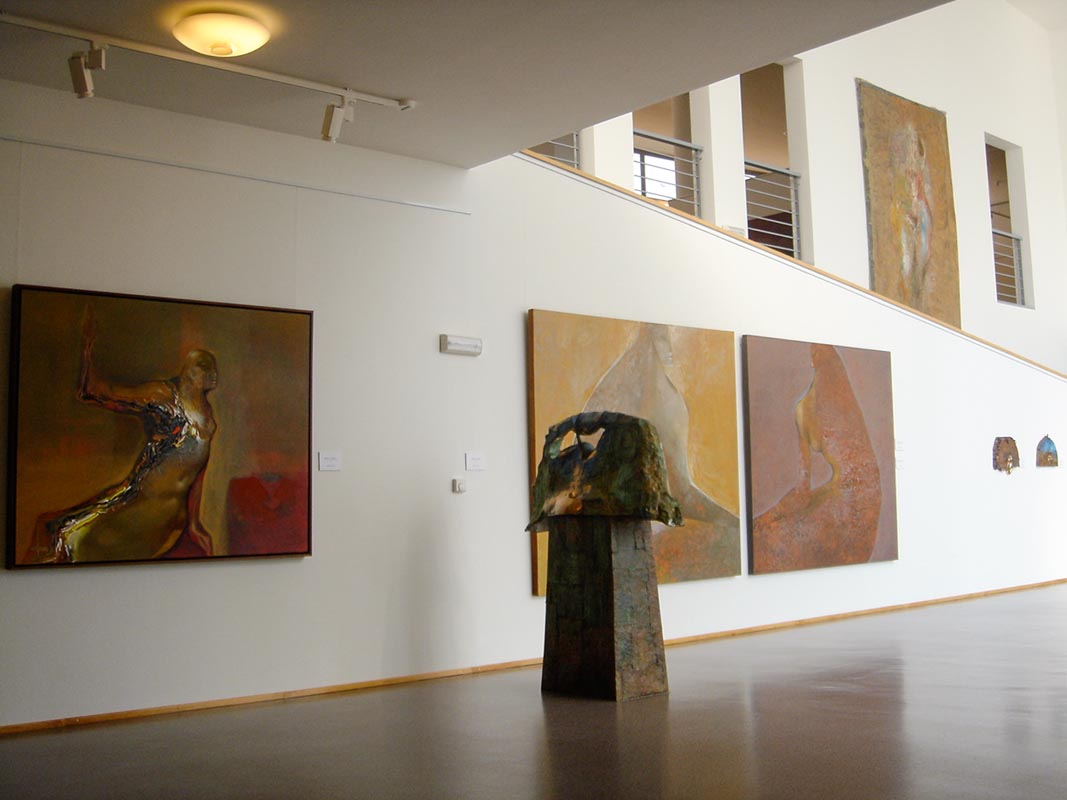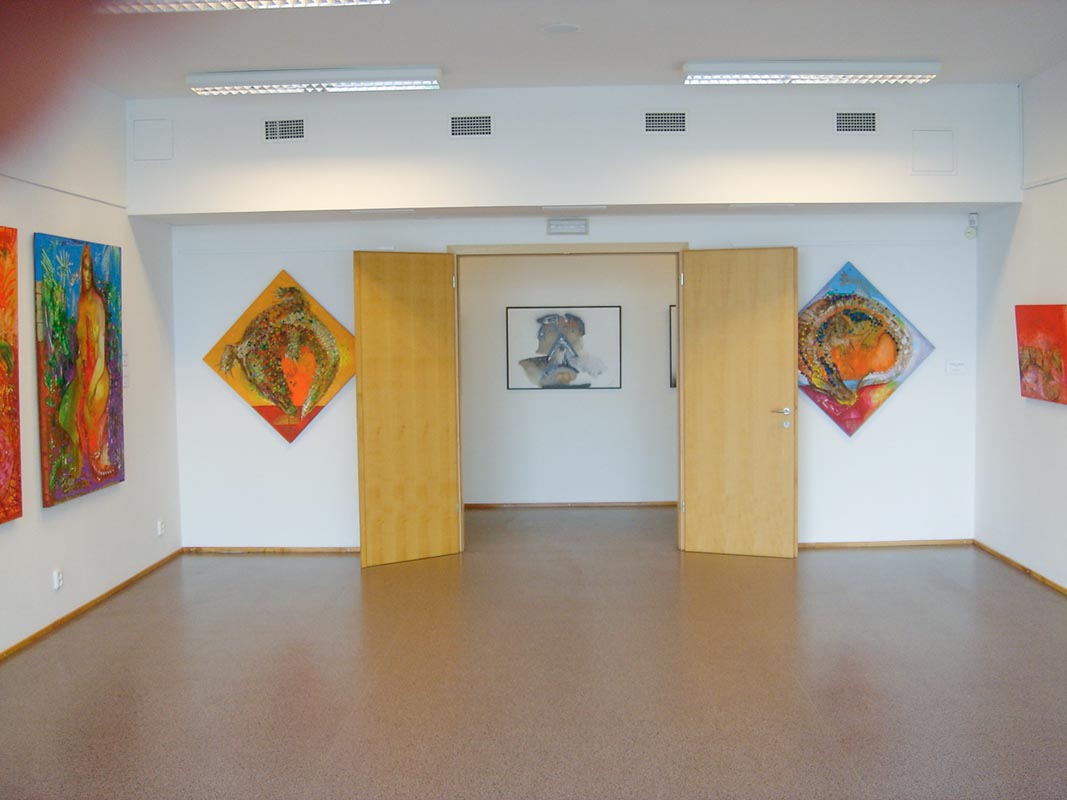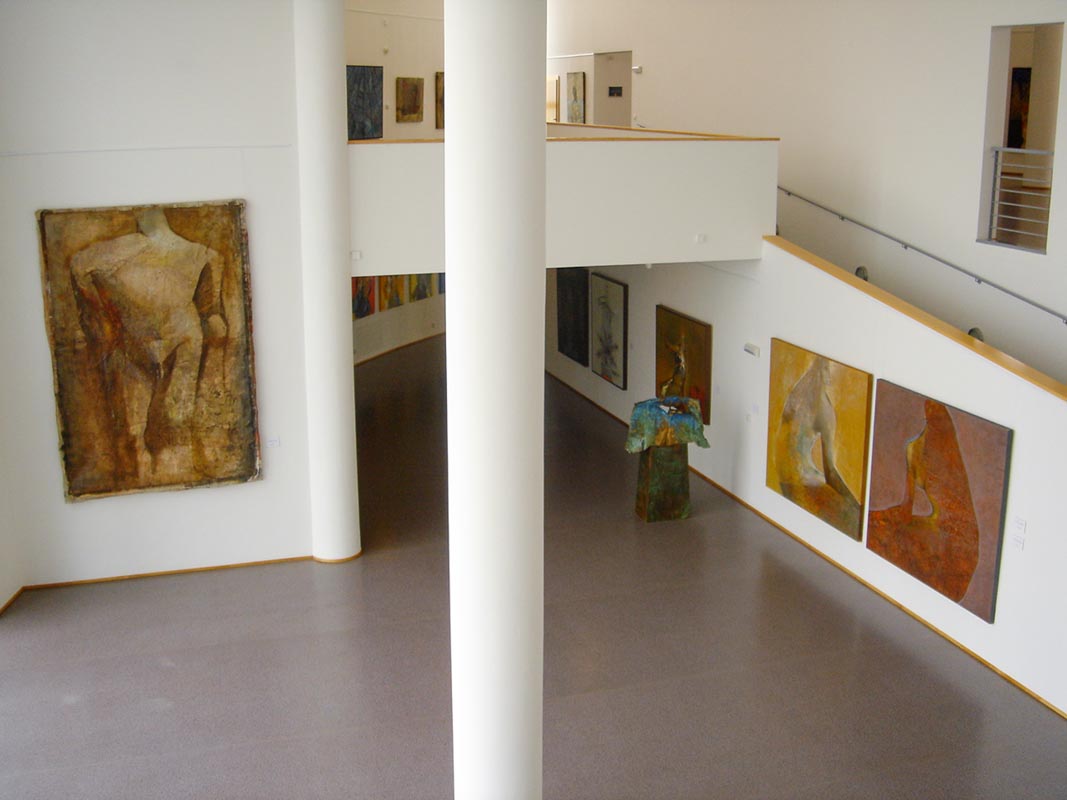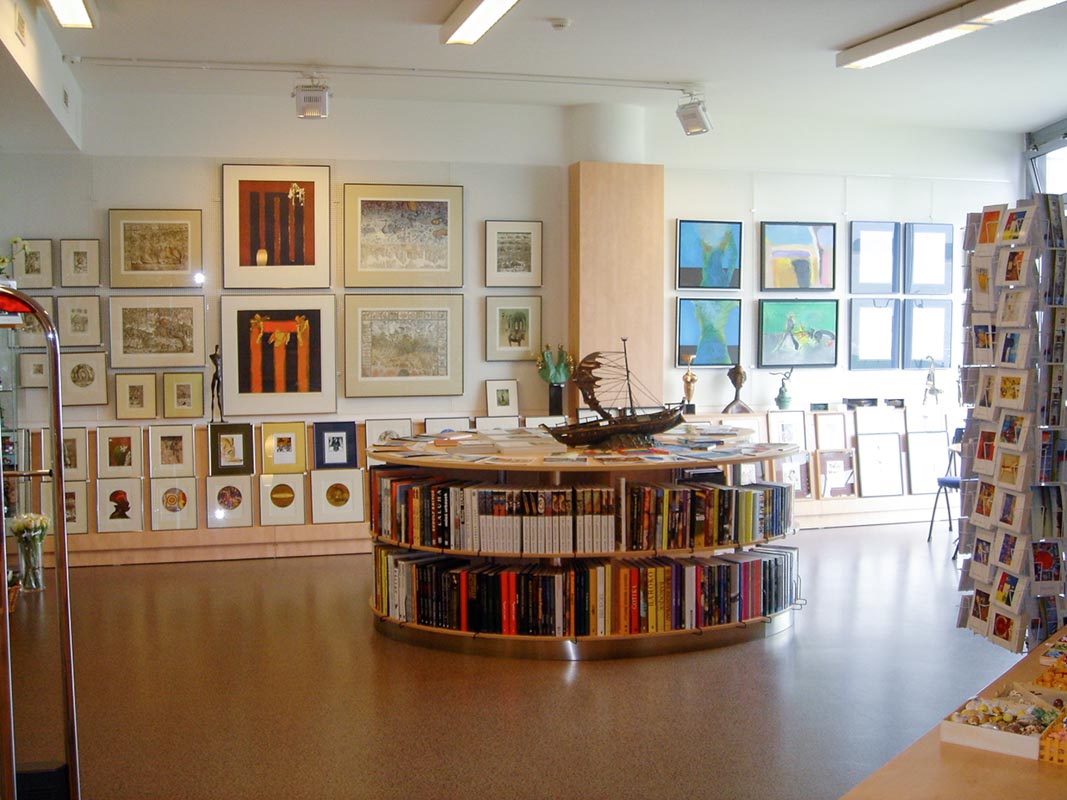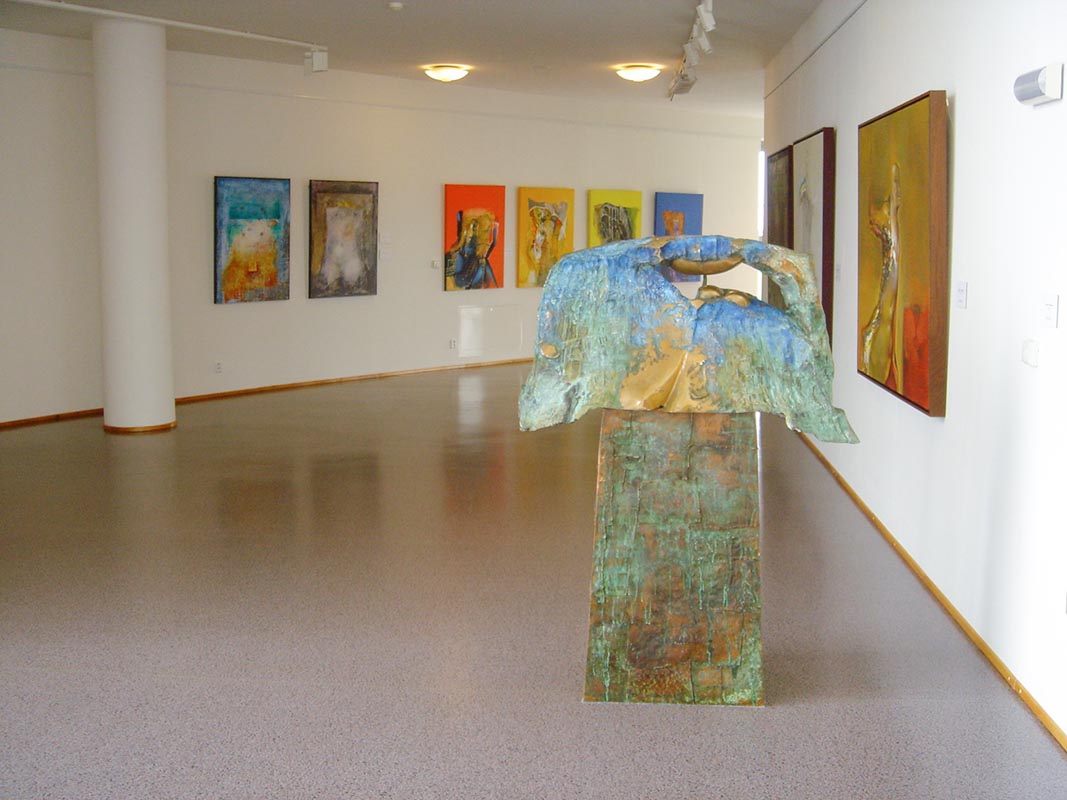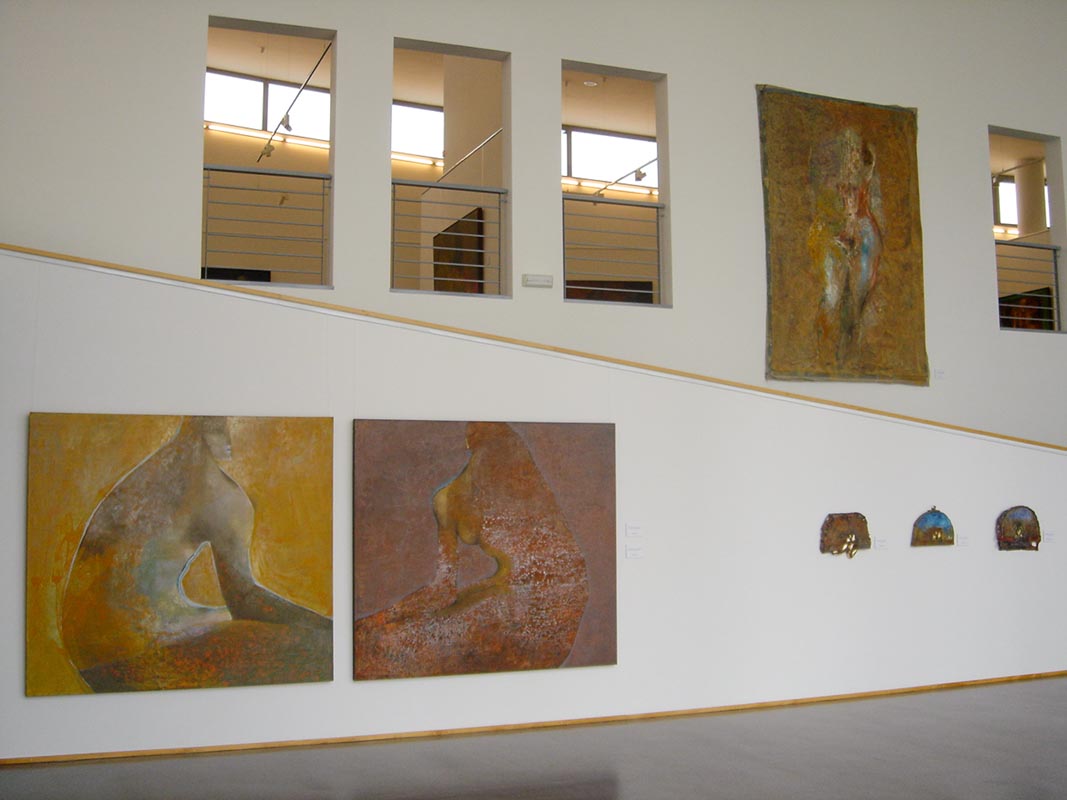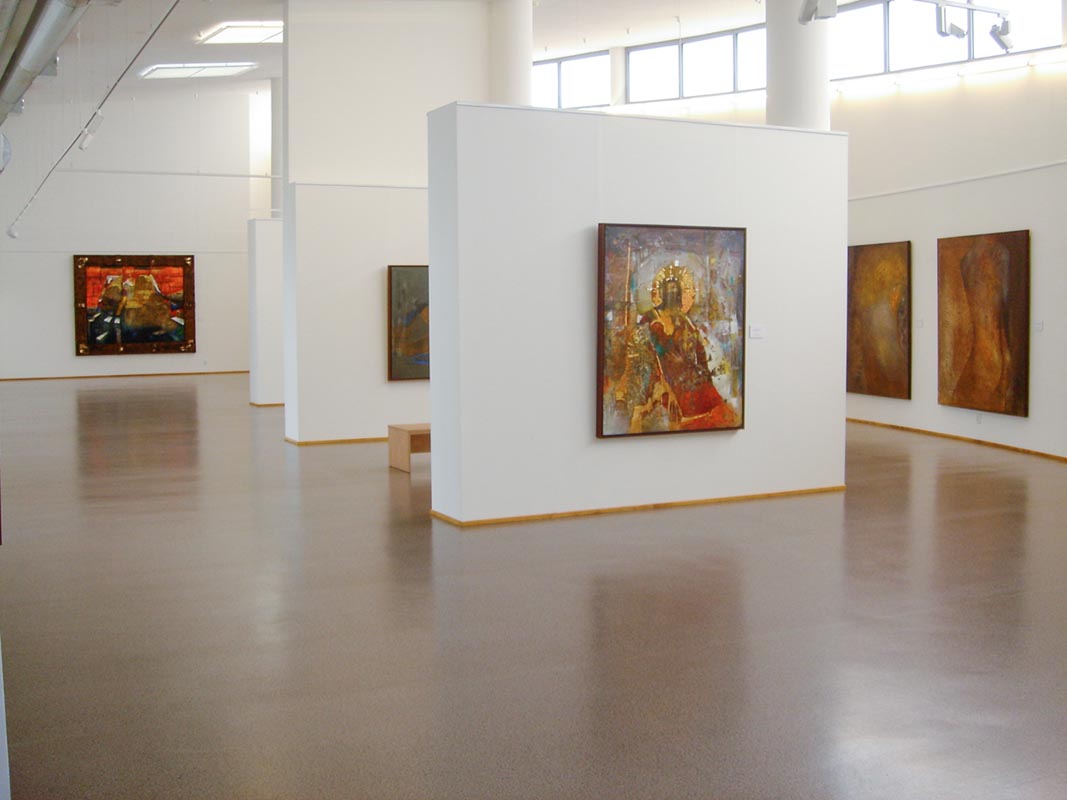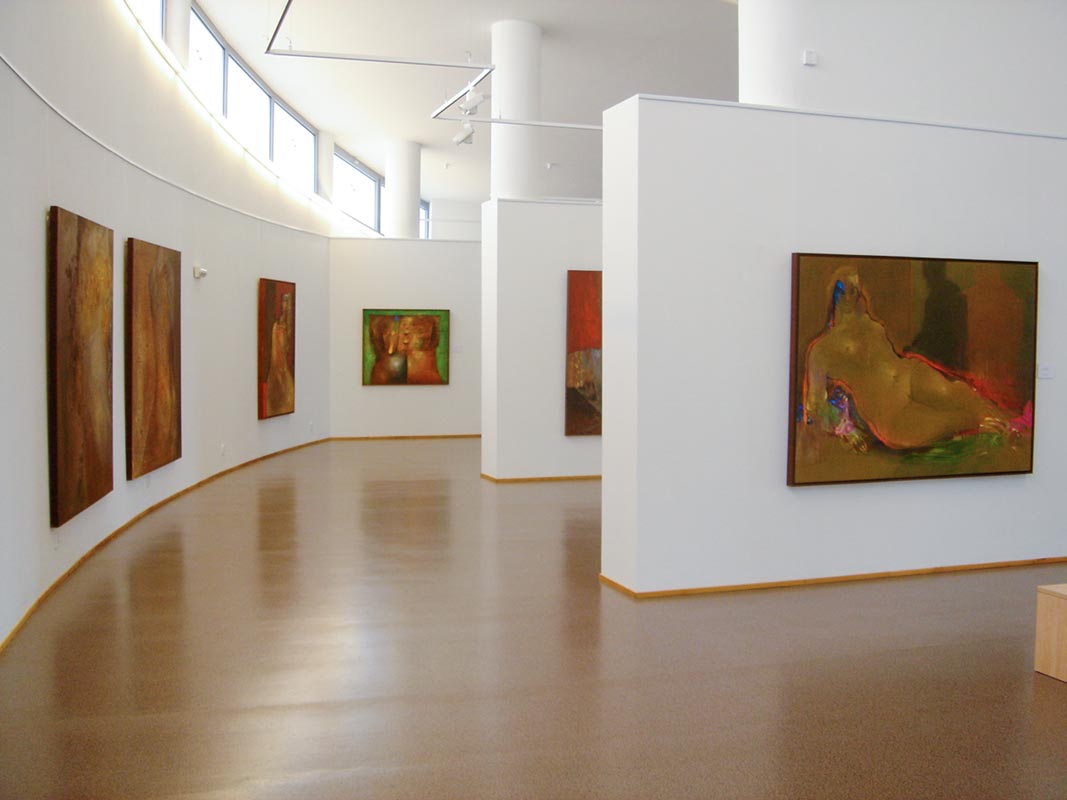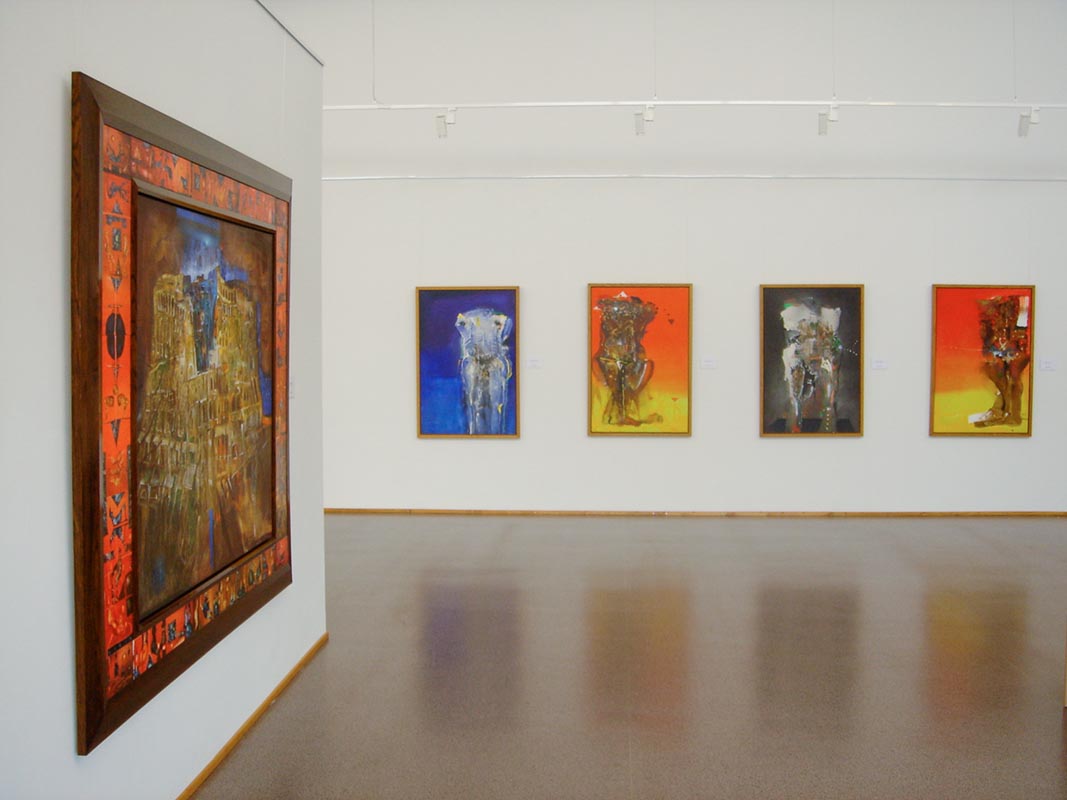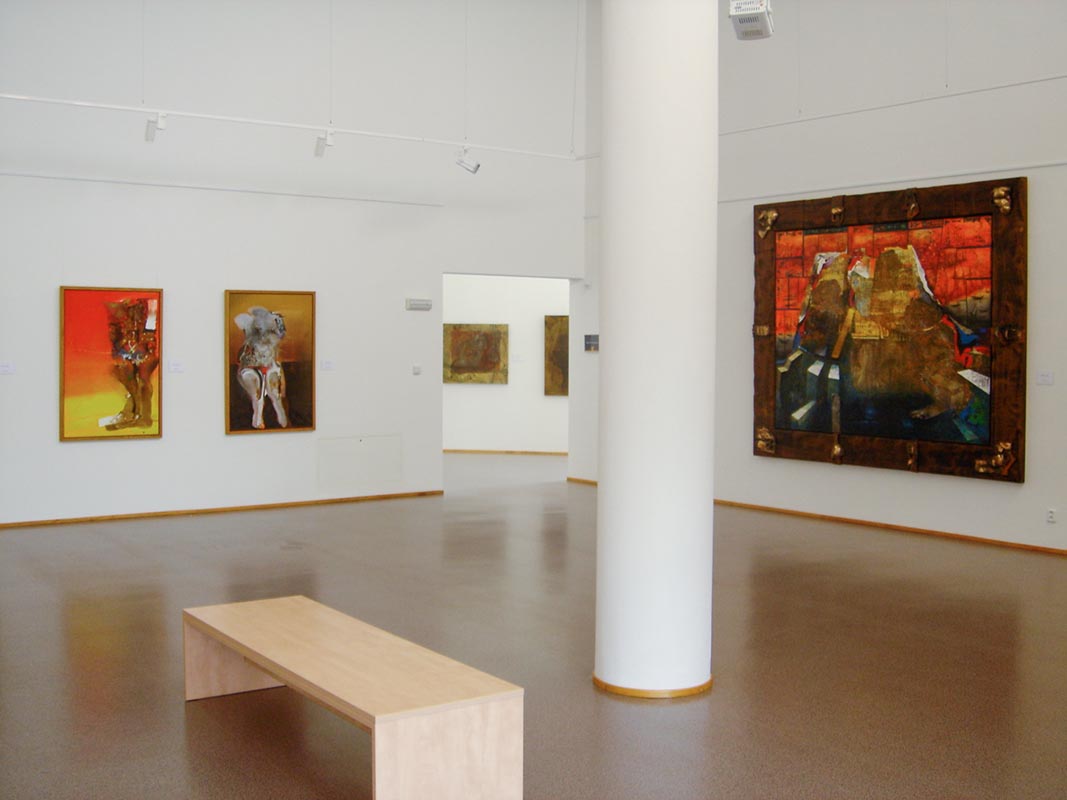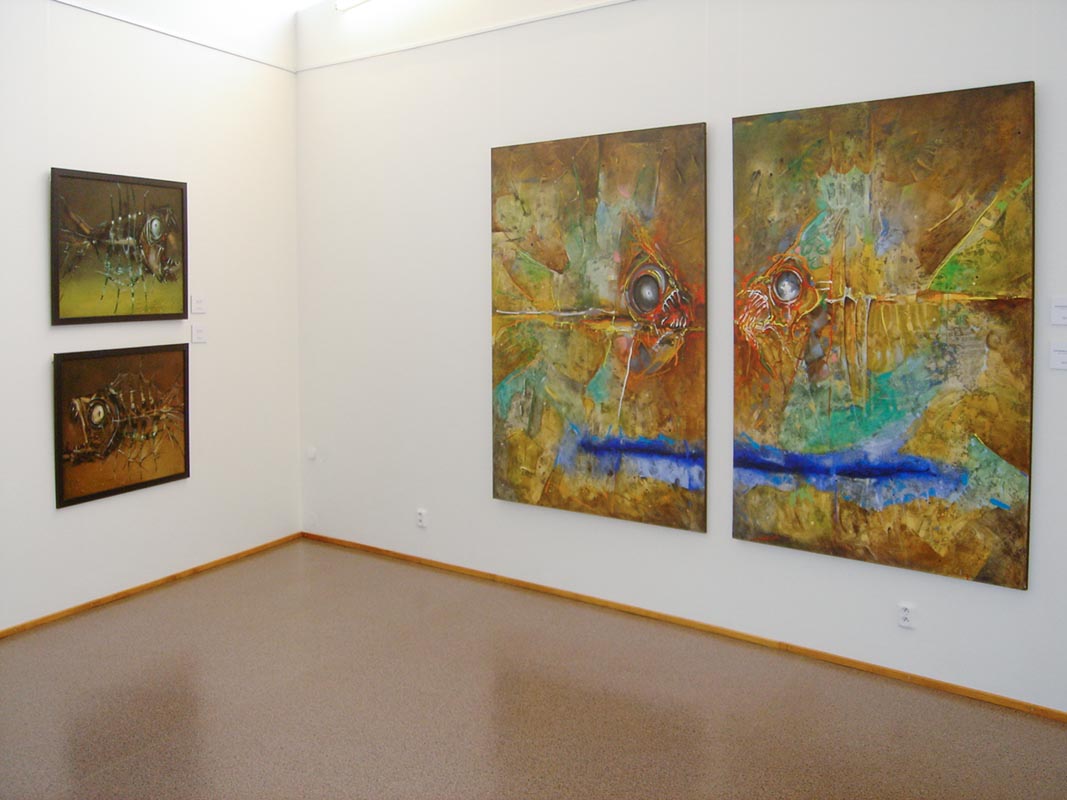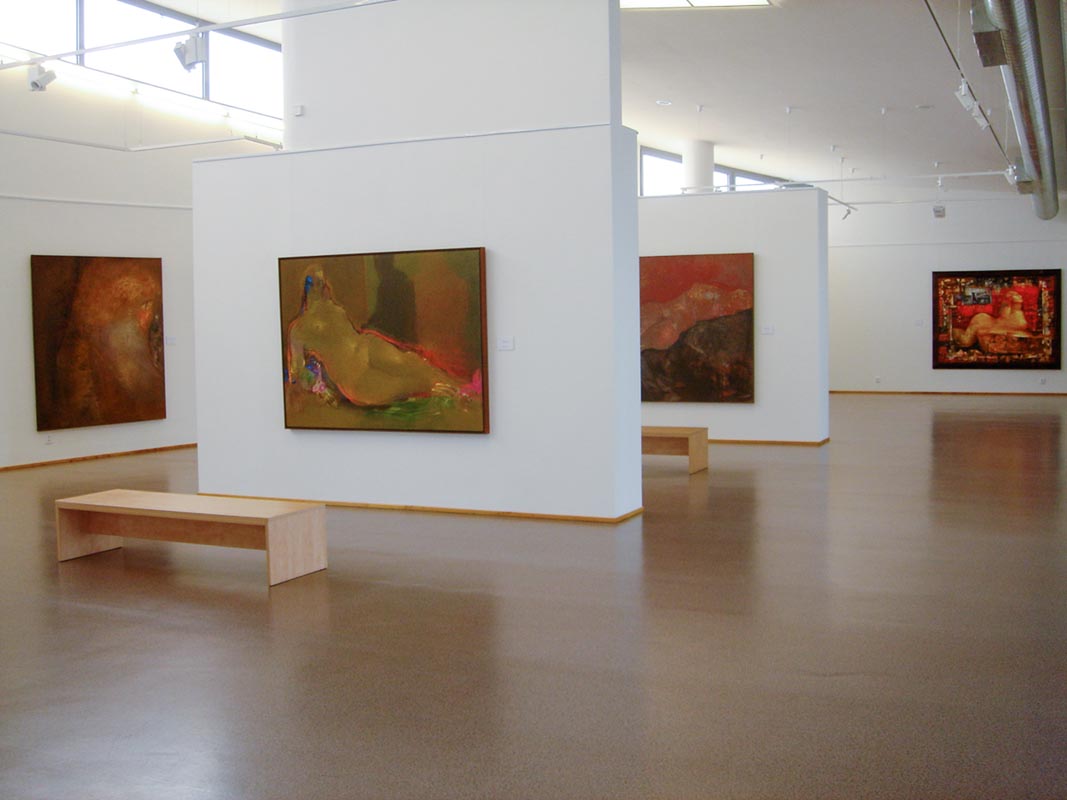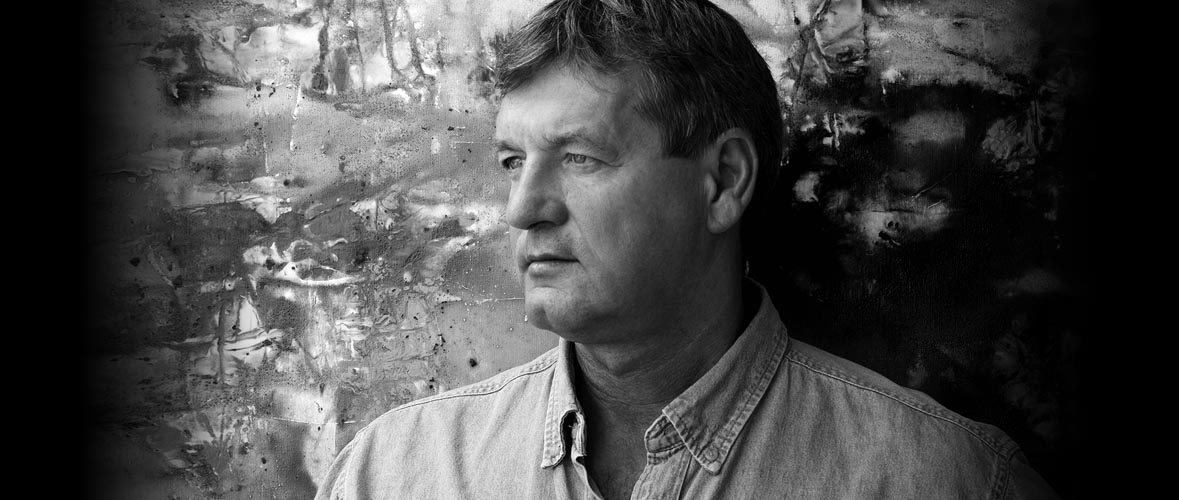

The retrospective of Ivan Pavle at the Danubiana was monumental in its artistic essence and scope. He is a painter in the most intrinsic meaning of this word, treating paint at every possible moment, yet
everything in his painting has its place. Pavle is a painter of figurative motifs, vegetation, landscapes and historicising themes, their artistic concept oscillating between reality and imaginary visions. In almost twenty-five years, changes occurred in his work. However, they are not shocking, caused by external influences, but internal, corresponding to his artistic vision. It is seen in the essential range of his painting, the relationship between figure and landscape. The figure always had its mass and a more compact shape. In the present compositions the monumental mass of the figure loses its compactness and its contour is outlined in charcoal. The concept of landscape reached beyond the imaginary figurativeness of sinful Babylon to embrace the vibrant motifs of Caribbean vegetation. Pavle’s painting technique indicates consistency in execution. He explores his own methods of creating spatial impressions, exploiting multi-layered scumbling. Layered paint and material structures, which created the plastic surface of painting, were later replaced by smooth scumbling. It allows him to develop rich narratives in imaginative monumental compositions.
Ivan Pavle is a most distinguished figure from the post-fifties generation of Slovak painters. He was born on 8 March 1955 in Galanta but grew up in Prievidza. In 1981 he graduated from the Department of Monumental Painting at the Academy of Fine Arts in Bratislava (under Professors D. Castiglione and I. Vychlopen).
He lives and works in Bratislava, focusing largely on his paintings and drawings, as well as sculptural creation, furniture design and, occasionally, illustrations. He has exhibited at prestigious galleries in Slovakia and abroad. His works can be found in public and private collections worldwide. He has attended several study stays, in particular, in the USA, Thailand and France, where he was awarded the Jury Prize at the International Festival of Painting at Cagnes-sur-Mer in 1989.
His work can be characterised by his continual, prolific restlessness and his distinctive individual style. His interest in making contact with the best works of the past has led him to the application of ancient techniques and recipes in his own painting processes. His numerous works demonstrate a combination of knowledge of tradition and respect for his material with topical themes.
